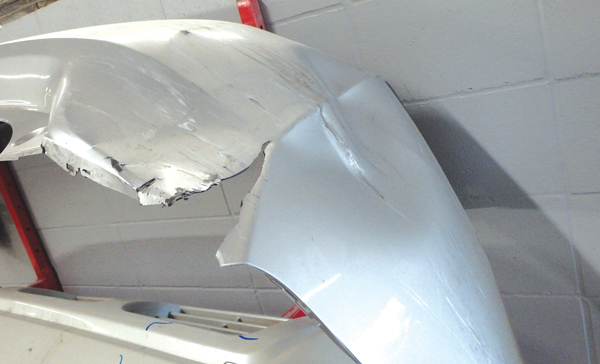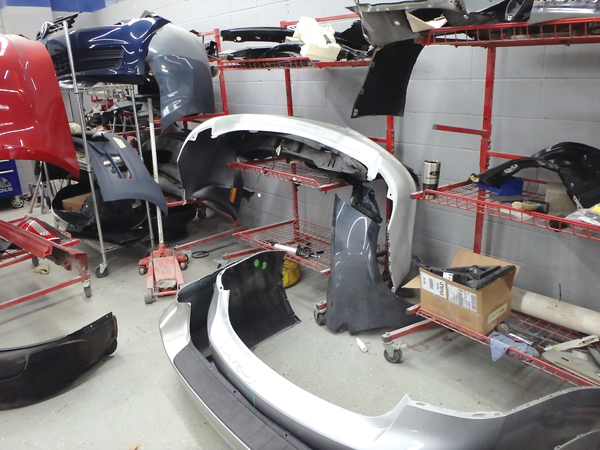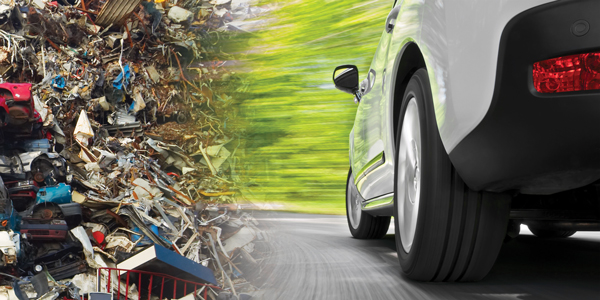We’ve all heard it from every source: technology keeps changing, and training is needed to keep up. We may get tired of hearing about it, but if you look around, you’ll see that it’s true.
Big-Time Advances
Plastic repair technology has advanced tremendously in the last few years. We’ve come a long way from just using a hot iron or airless welder. The use of adhesives, staples and nitrogen have changed the way we estimate and evaluate these damaged parts. Not too long ago, the auto body repair industry would throw these damaged parts out. Now, technicians have ways to fix and save these damaged and mangled parts. I’ve seen some seriously messed up parts look like new after using some of the technology and procedures available today.
Why Repair?
Experts all agree that tomorrow’s automobile will have more lightweight metals and plastics in it. Automakers must find ways to decrease weight in vehicle construction to meet CAFE standards. This is proving difficult as more and more electronics are being added, which increases overall vehicle weight.
There’s a lot of talk about the increase in carbon fiber in vehicles, but it may take a long time until it becomes cost-effective. Until then, we’ll see the common plastics taking a much larger role, which will drive the repair industry into doing more plastic repair.
The addition of new sensors and safety systems will also change plastic repair. Knowing what can be repaired and where, due to radar and sensors, will be critical.
This increase in the ability to repair plastic is a good thing for the repair industry and the consumer. The plastic parts used years ago and today can be fairly expensive to replace. When a part is replaced, there’s a limit on how much profit a shop can make. Shops make more profit in the repair labor process, and technicians make more money as well. The process of repairing damaged plastics also keeps repair costs down. So, overall, it’s a win-win situation for all. And let’s not forget vehicle owners — they get to keep original parts, too, so no discussion of recycled, remanufactured or aftermarket parts needs to happen.

Keeping Pace
In the beginning (which really was not all that long ago) shops were really limited on repair options. The use of different types of plastics and the properties of those plastics left technicians scratching their heads. These different properties and chemistries made it difficult for technicians to know what to do. We had some products that adhered to the plastic and a hot iron that melted the base materials. By the time it was all figured out and possibly repaired, we then had paint issues. Nothing wanted to stick. The traditional methods were just stressful and limited.
Then, all of a sudden, some ingenuity and good ol’ American competition kicked in. We saw huge advancements in adhesives, and then plastic welders leaped ahead in technology. The ability and speed at which we can repair plastics today is incredible, to say the least.
Are we done yet in advancements? No way. As we see carbon fiber increase, we’ll see this repair technology drive ahead too. We’ve seen a plateau until the next invention leap-frogs us forward.

Adhesive Repair
Adhesive repair today is incredible as to the quality and finish of repair and ability to work with thermosets and thermoplastics as well as SMCs. Identifying the type of plastic is still a good start before using any product.
Following all the procedures step by step is a must. Technicians who take shortcuts will have problems, most of which would be corrected when they follow all procedures correctly. The similarity to using body fillers makes this an easy learning process for technicians.
The advancements in technology in new products has allowed for the following:
Adhesion promoters. The ability to bond to all plastics is tremendous. Using these correctly and knowing the type of plastic is a must for technicians.
Strength. The strength of adhesive repairs is exceptional. This leads to great durability and longevity of repairs.
Easy sanding. Ease of sanding and repair improves cycle time in shop, making for a very fast and clean repair.
Flexibility. New adhesive products flex like crazy, so there are no worries when bending or fitting.
Tab repair. Fast, easy tab repair is a great asset of these adhesives.
Quick cure. The ability for quick cures and fast workability help to drive plastic repair. Time is the biggest factor, along with a quality repair.
Works with all plastics and plastic blends. The ability to work with all plastics is a great advancement for adhesives.
None of these products will work well if technicians aren’t trained on their proper use. A shop not using training resources has been proven to slow production down. Keeping up with product changes and repair technology is a critical step.

Plastic Welding
Changes in plastic welding have opened up the plastic repair market as well. New machines and abilities continue to give shops even more options and more choices. Again, training is needed to understand this technology and make it work for you. Technicians familiar with welding metal sometimes have an easier time understanding plastic welding.
Plastic welding has come a long way from using just an airless welder. A hot iron is still used, however, it’s just more of a finishing step than a welding step. New plastic welders create heat through the use of hot air or nitrogen to melt base plastic and filler rods. The choice of system to use makes a big difference in time and quality.
Heat
Hot air is used for plastic welding, but it sometimes takes a long time to melt base material. Finding a way to make heat and concentrate on the area of the base metal and filler rod was a step needed to make a fast, quality repair.
Adding nitrogen to the process as a source of heat was a well-needed advancement, as nitrogen can heat up more quickly and is more focused. The problem was that it added cost, and there was some waste of nitrogen. However, new computers now control nitrogen flow, so nitrogen only flows when heat is needed. Machines now switch back to air to keep the elements warm and cool them down when the nitrogen is turned off, which prevents burning them out. Technology like this adds value to shops and increases quality.
Filler Rods
Filler rods come in a variety of plastics, plastic blends, sizes, and shapes. Finding the right rod is a critical step in this process, because the wrong choice can lead to some major problems failing the repair. Either identifying or testing which rod is best will save major headaches. There is a universal rod, but don’t rely solely on that for all repairs. In some flexible areas, it could be a problem. The rods are used almost like in oxyacetylene welding, except they lay in instead of being dipped. Advantages of this technology include:
Strength. Base materials and rods melt together for plastics that can be welded, such as TPO, TEO, PP+EDM. This covers 80% of bumper covers.
Speed. Can be done fairly quickly and in places difficult to shape.
Easy sanding. Although may still need flexible plastic filler to finish any low spots.
Easy to learn. Technicians catch on to procedures quickly.
Fast, easy tab repair.
Backing Both Types
Whether you use adhesive or plastic welding, a backing to tears is required to add strength and keep from tearing again. Both may use a mesh material or a sticky backing or even tape. Whichever you use, be sure to use one. Many repairs fail due to a lack of backing or properly aligning edges.
Staples
This is where I was really impressed: the technology of hot staples. I’ve seen them used effectively for both types of repairs, not only aligning edges but adding strength. Different shapes and sizes have different functions, so please read and understand which is best for your repair. This simple technology can save a great deal of time and make repairs an option where they previously may not have been.
What’s Right for You
Which process is best? As I said, it’s the ability of the technician that may decide that. All types of training are out there.
I-CAR has plastic repair courses and alliance programs with almost all companies. I’ll admit that after taking some training, I’ve found that training videos on YouTube from manufacturers make for a great supplement to my education. There may be a video out there on the procedure you’re trying to do. Be careful to only use the manufacturer’s procedure, though — others may take shortcuts that could lead to a disaster. Just because it’s on the internet doesn’t make it true.
New Technology
Change is inevitable and constant. Will procedures improve or change? Yes. How you keep up is a critical step to your success.
Following directions is also as important. Taking training is a must. As carbon fiber increases, we’ll need to learn to repair this too. Starting now to research and understand will make it easier on you.
Plastics will evolve, making them easier to use and more cost-effective. Repair procedures for plastics have evolved, too, and they’ll evolve again. Like I said, I know less today than I did yesterday.
Article adapted from Body Shop Business.














